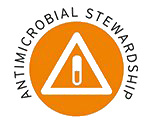January 27, 2020 -Use of the MolecuLight i:X to image for bacterial fluorescence, in conjunction with clinical signs & symptoms, adds an additional bacterial-specific piece of information that can be captured and considered in real-time. Read More
January 27, 2020 -Clinical Synopsis
Patient Condition: 47 year old male required an above knee amputation following a traumatic burn injury. Patient reported severe pain and developed an abscess ~6 weeks post-amputation.
Patient required a right, above knee amputation after severe burns. The stump later became infected, therefore was evacuated, washed out and
… Read More
January 27, 2020 -Use of the MolecuLight i:X to image for bacterial fluorescence, in conjunction with clinical signs & symptoms, adds an additional bacterial-specific piece of information that can be captured and considered in real-time. Read More
January 27, 2020 -ABSTRACT Introduction:
Amputations amount to $8.3 billion in hospital costs annually in the United States.1 In the general population of England more than 2700 lower limb amputations occur annually, with a mortality rate of 17%.2 Infection is a major potential complication in all wounds, however the highest rate of
… Read More
January 27, 2020 -ABSTRACT
Colorectal resections have a 4-25% acute surgical site infection rate, despite perioperative best practices for prevention. Repair of abdominal wall hernias carry risks for wound failure and infection. Management of wounds is resource intensive (~70% of home care visits). Care providers assess traditional markers for wound infection (pain,
… Read More
January 27, 2020 -ABSTRACT Aim:
Real-time, point-of-care detection of critical bacterial colonization relies primarily on subjective visual inspection and clinical signs and symptoms. When wounds are illuminated by violet light, most pathogenic bacterial species emit a unique red fluorescence signal due to the production of endogenous porphyrins, while Pseudomonas aeruginosa uniquely emits
… Read More 









